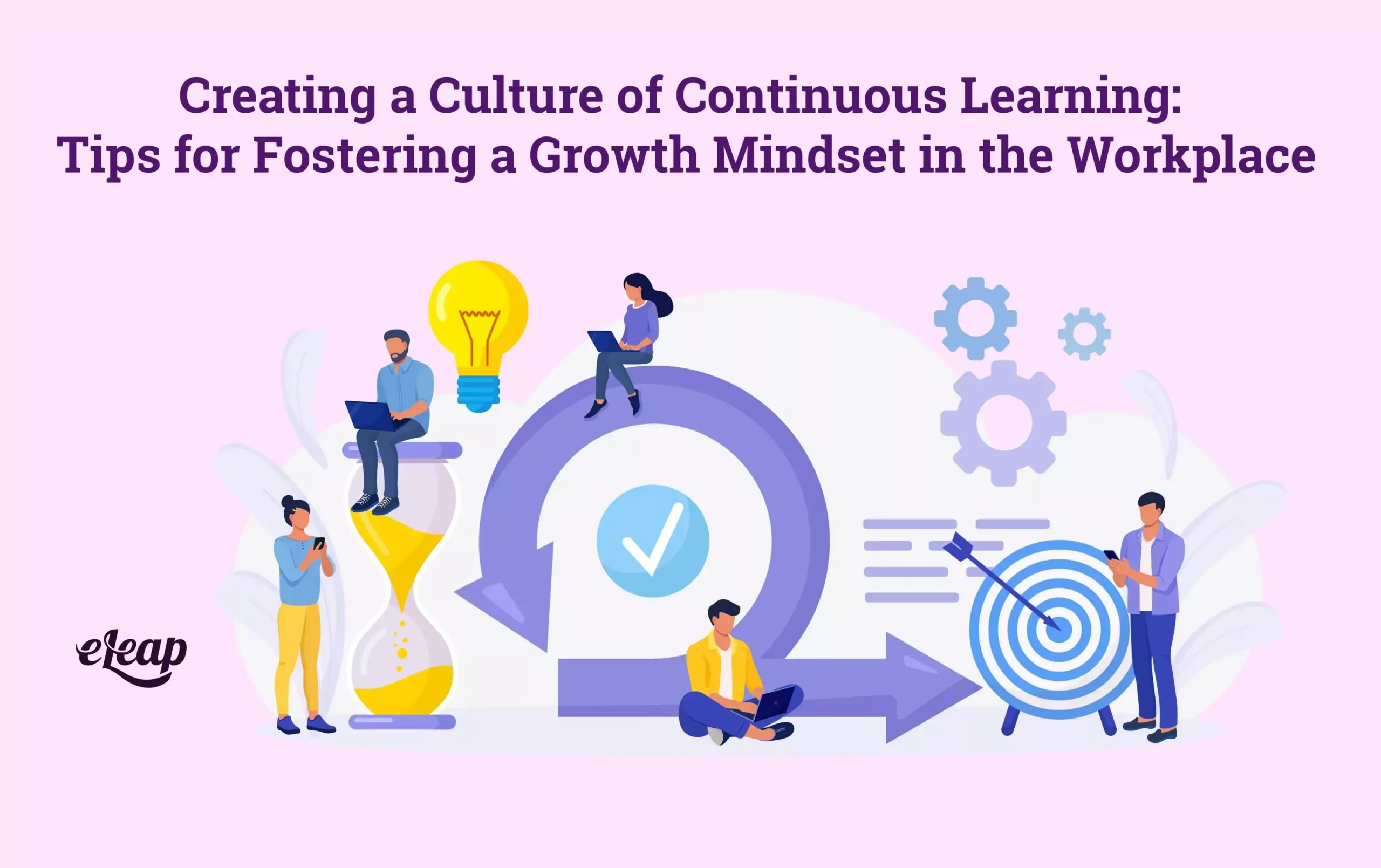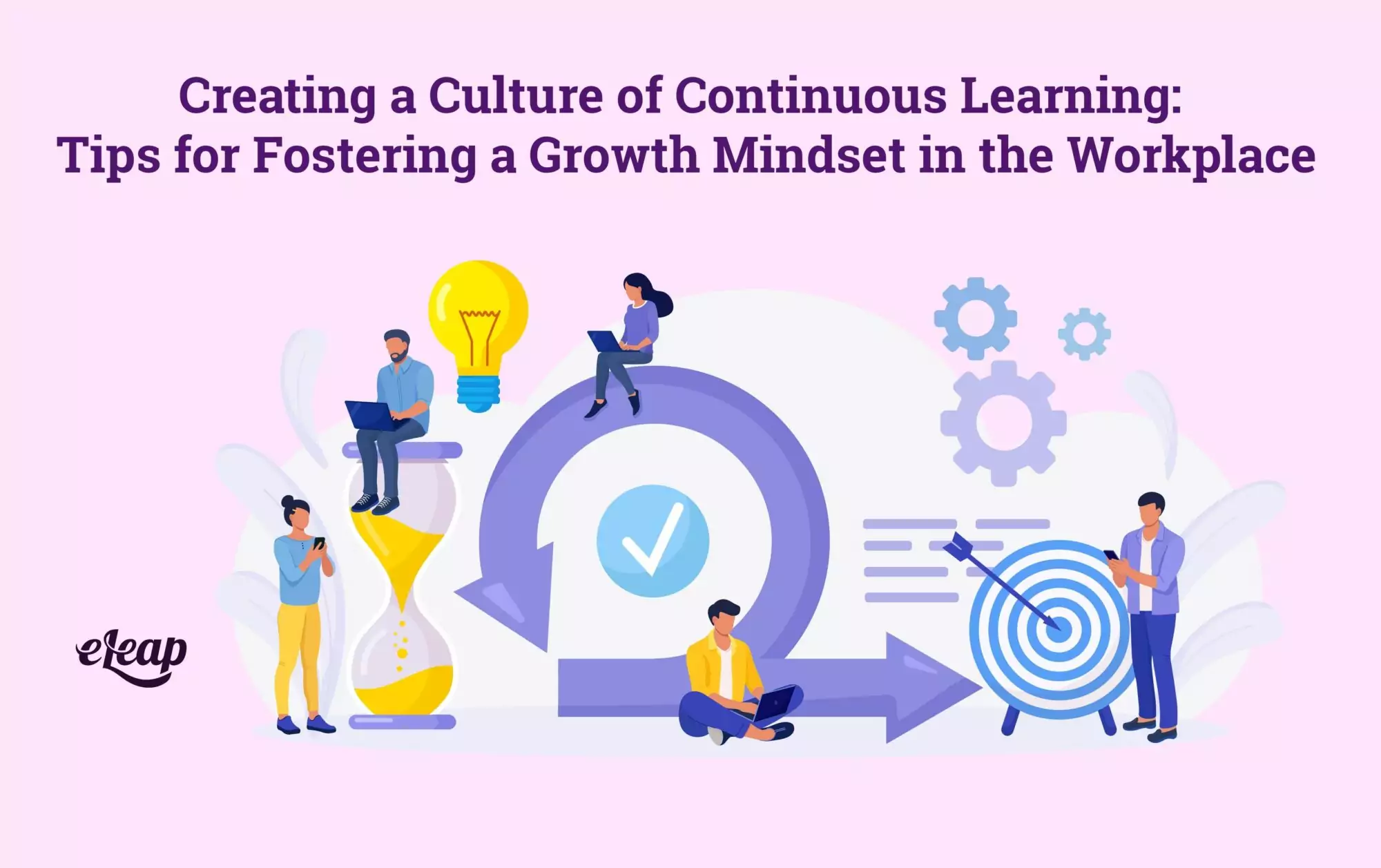Creating a Culture of Continuous Learning: Tips for Fostering a Growth Mindset in the Workplace

Imagine entering an office where every conversation, every interaction, and every project is a learning opportunity. A place where employees approach challenges with curiosity, not fear, where innovation isn’t just a phrase but a way of life. This isn’t some utopian vision – it’s a potential reality in organizations that create and nurture a culture of continuous learning.

The scenario might remind us of how Microsoft redefined its organizational culture in 2014 when Satya Nadella took over as CEO. He shifted the company from a “know-it-all” culture to a “learn-it-all” one, implementing a growth mindset across the organization. As a result, Microsoft experienced a remarkable renaissance, becoming a trillion-dollar company and regaining its status as a leader in technology innovation.
But what does it mean to foster a culture of continuous learning? How do organizations create this environment? Here, we’ll explore strategies for instilling a growth mindset, an essential aspect of a learning culture, in the workplace.
What Is a Growth Mindset?
The term “growth mindset,” developed by psychologist Carol Dweck, signifies the belief that our abilities and intelligence can be developed over time. It contrasts with a “fixed mindset,” which suggests that our traits are innate and unchangeable. In the workplace context, a growth mindset involves seeing challenges as opportunities for learning and viewing failure as a catalyst for growth, not a symbol of incompetence.
Encouraging a Growth Mindset in the Workplace: Key Strategies
Creating a growth mindset in the workplace doesn’t happen overnight, but gradual and consistent efforts can lead to significant changes. Let’s consider some strategies to encourage a growth mindset.
Promote Open Communication and Feedback
Fostering a growth mindset begins by cultivating an environment where open communication and feedback are welcomed. Take Google, for instance. Its weekly “TGIF” (Thank God It’s Friday) meetings allow employees to question executives openly. By giving everyone a voice, Google reinforces that everyone’s ideas are valuable, fostering a mindset of continuous learning and improvement.
Value Effort Over Outcome
In a growth-mindset organization, effort is celebrated just as much as the outcome. Consider how Pixar Animation Studios conducts “post-mortems” after each project. These meetings aren’t about pointing fingers or assigning blame; instead, they focus on what the team learned during the project, irrespective of its outcome. By emphasizing the learning process, organizations can encourage employees to embrace challenges and learn from failures, hallmarks of a growth mindset.
Implement Mentoring and Coaching Programs
Mentoring and coaching programs are vital for fostering a growth mindset. By assigning mentors to new hires, organizations can instill a culture of continuous learning from day one. Also, coaching programs can provide employees with personalized feedback, helping them continually improve. Companies like Atlassian have gone further by implementing “coaching circles,” where employees from different departments come together to share experiences and learn from each other.
Building a Culture of Continuous Learning
Instilling a growth mindset is just one part of building a culture of continuous learning. Here are more steps organizations can take.
Leadership Role Modeling
Leadership plays a critical role in creating a learning culture. By actively demonstrating behaviors associated with a growth mindset, leaders can inspire their employees to do the same. An example is Jeff Bezos’s “Day 1” philosophy at Amazon, where he encourages his team to approach each day with the curiosity and enthusiasm of a startup’s first day.
Incorporate Learning into Regular Activities
Regular team meetings can be transformed into learning opportunities. For example, organizations can introduce “learning moments” during meetings where team members share something they have learned recently. Salesforce employs a similar strategy by hosting “Lunch and Learn” sessions, where employees gather to share knowledge and learn from each other.
Invest in Learning and Development Programs
Investing in comprehensive learning and development (L&D) programs signifies an organization’s commitment to continuous learning. LinkedIn’s “InDay” is a monthly event where employees take a break from their regular work to develop new skills. Furthermore, L&D programs need not be restricted to job-related skills. By broadening the learning scope, organizations can help employees develop a wide range of competencies.
Leverage Technology
With the rise of technology, numerous platforms and tools facilitate continuous learning. Learning Management Systems (LMS) can provide personalized learning pathways, allowing employees to learn at their own pace. Platforms like eLeaP can track all the learning employees do, helping organizations recognize and encourage learning.
Foster an Environment of Psychological Safety
A culture of continuous learning can only flourish when employees feel safe to take risks and make mistakes. Psychological safety, a concept popularized by Google’s Project Aristotle, refers to an environment where employees feel comfortable expressing their thoughts without fear of judgment or punishment. By fostering psychological safety, organizations can encourage employees to step out of their comfort zones and embrace learning opportunities.
The Payoff of a Culture of Continuous Learning
Creating a culture of continuous learning can yield significant benefits. It can lead to improved performance, innovation, and job satisfaction, leading to lower turnover rates. A learning culture can also help organizations stay agile in the face of rapid technological advancements, helping them maintain a competitive edge.
Moreover, fostering a growth mindset can lead to higher levels of collaboration and engagement. A study by Harvard Business Review found that employees in growth-mindset organizations are 65% more likely to say that their company supports risk-taking and 49% more likely to say their organization fosters innovation.
Wrapping Up
Creating a culture of continuous learning is a journey, not a destination. It requires a sustained commitment from everyone in the organization, from the CEO to the newest hire. By fostering a growth mindset and investing in learning and development, organizations can build a culture that values curiosity, embraces challenges, and celebrates learning, leading to a more engaged, innovative, and resilient workforce.
Like Satya Nadella led Microsoft into a learning revolution, the next transformative leader could be you. By embracing continuous learning, you’re not only shaping your organization’s culture but also paving the way for its future success. As the saying goes, the capacity to learn is a gift; the ability to learn is a skill; the willingness to learn is a choice. Make that choice today, and lead your team into a future of limitless possibilities.